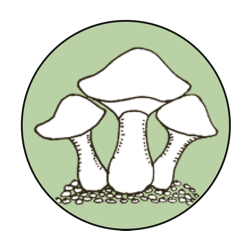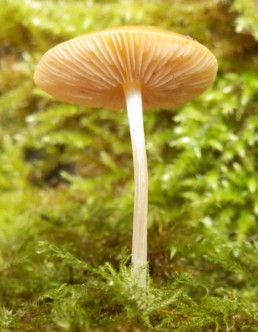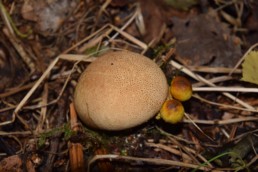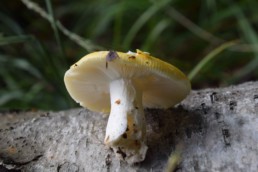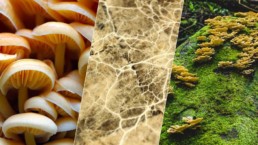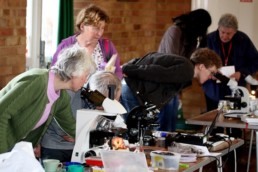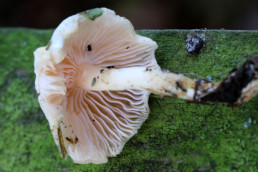Four Pluteus (Shields) from Gobions Wood on 4 September - continued
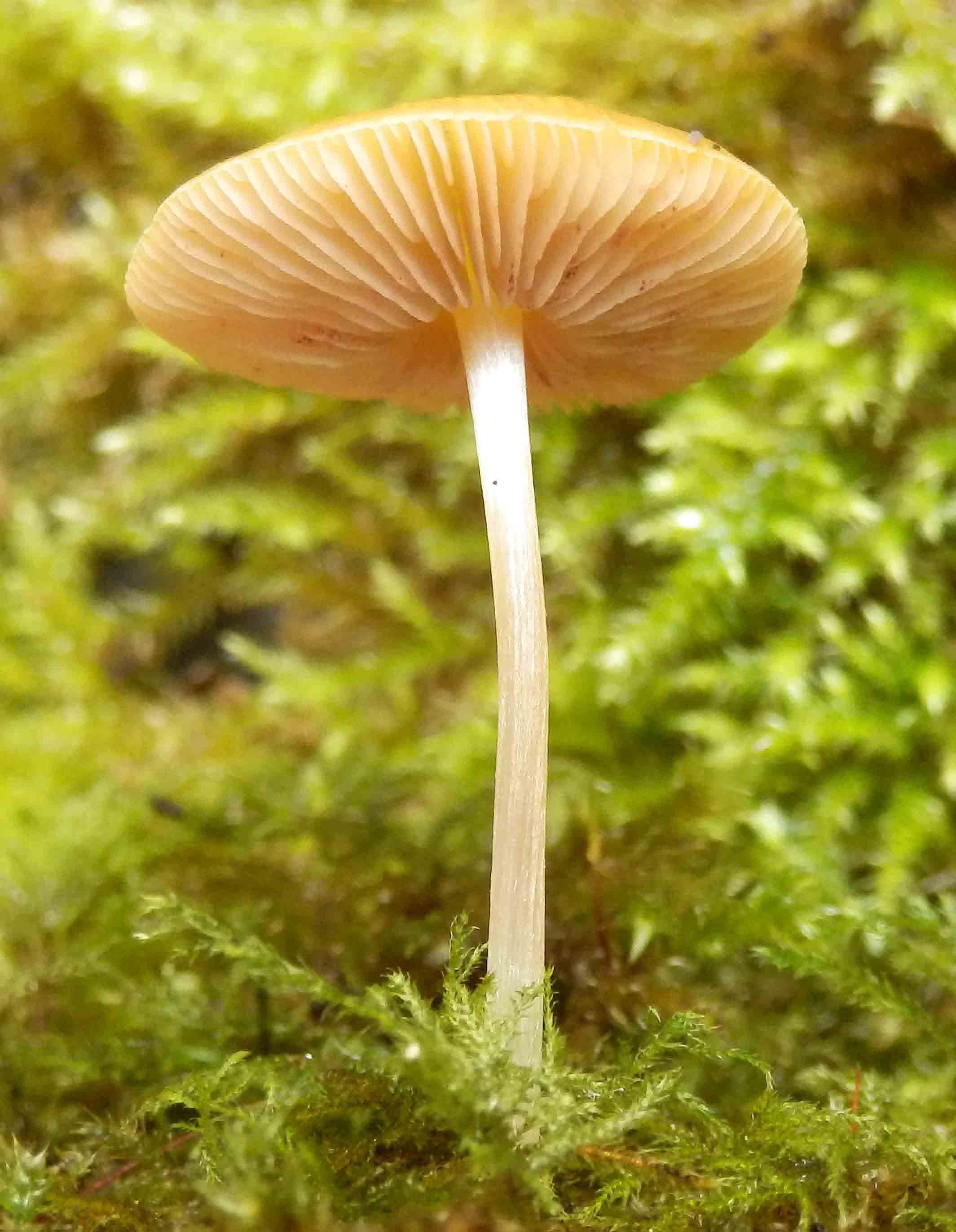
…and a second photo from Alison – Pluteus luteovirens
Another photo from Flitwick Moor
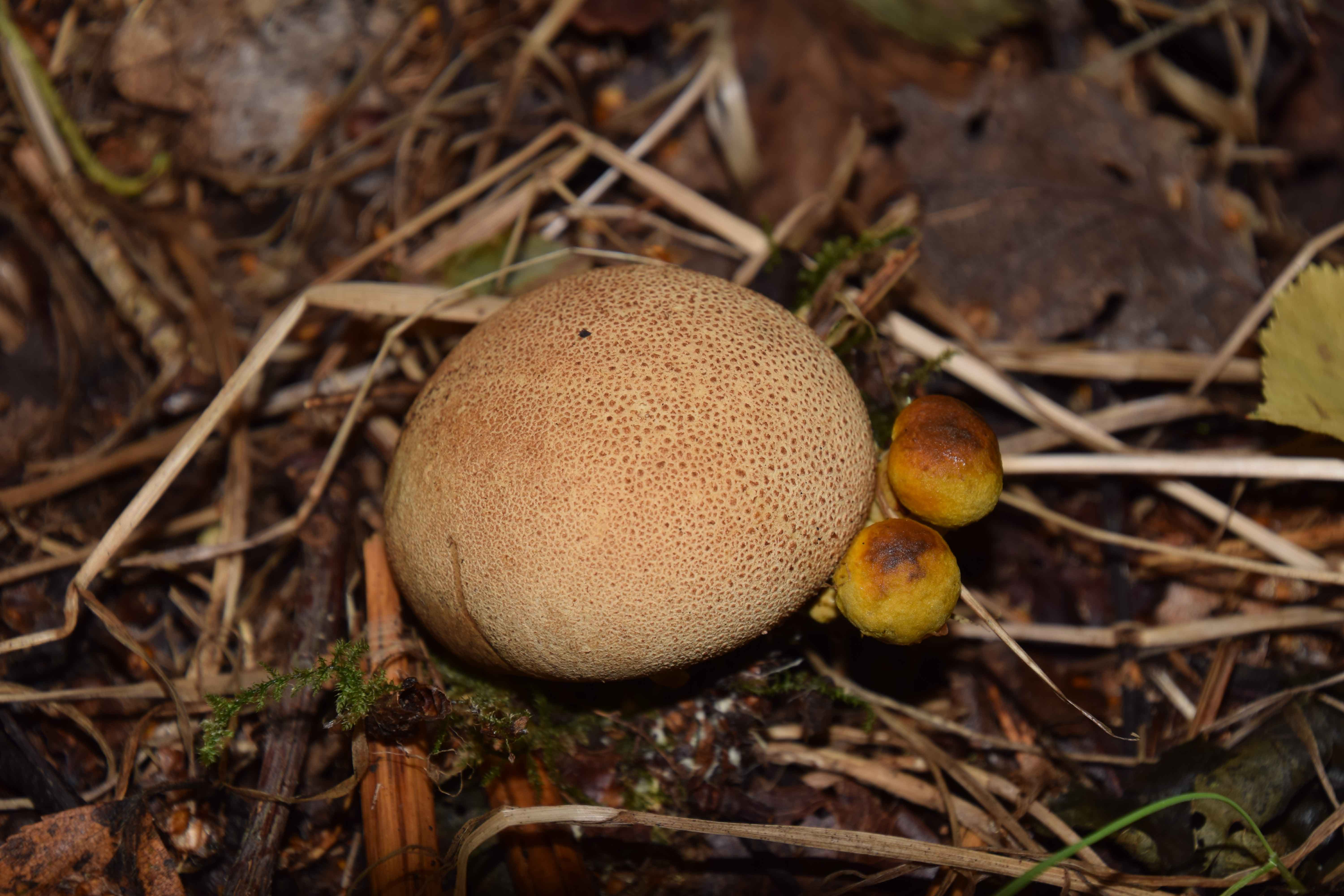
Pseudoboletus parasiticus (Parasitic bolete) with Scleroderma citrinum (Common earthball); photo by Sharon.
Flitwick Moor meeting
We had a pleasant day for our meeting at Flitwick Moor on 18 September, with the ground not too dry, as is always the case at this site which is unusually damp for Beds. We saw several of the site specialities including Russula claroflava (Yellow swamp brittlegill – photo courtesy of Sharon) and Pseudoboletus parasiticus (Parasitic bolete) which although always found with Scleroderma citrinum (Common earthball) may not in fact be parasitic with it.
Autumn programme now in calendar
Members will already have received our autumn programme. It is now also on the website (click on the relevant date in the calendar bottom right). If you are a member of the newsgroup, you will receive a reminder before each meeting.
Pat
Autumn programme now available!
Our autumn programme is now finalised and is being sent out to members. I will be adding it to the website calendar in the next few weeks.
Meanwhile people tell me fungi have been popping up all over the place, although I haven't seen any, so hopefully this will be a good season.
Pat
Ascomycete workshop on 10 April
We had a bright day for our morning field meeting to collect specimens, less windy and warmer than it has been through this chilly spring, but very muddy underfoot, and we had a good turnout of 20 people. Northaw Great Wood, new to some of us, was also impressive.

We then moved to Northaw village hall and set out our microscopes. After our AGM and lunch, Kerry gave us a brief introduction to some of the discomycetes and pyrenomycetes most commonly encountered in Herts, together with useful tips on how to separate them, and illustrated this with her wonderful close-up photos of these lovely little things. She then demonstrated some microscopy techniques. All in all a very enjoyable and informative day.

Some of Ascomycetes included:
| Annuloypoxylon minutellum (= Hypoxylon) – on Oak (photo below) Annulohypoxylon multiforme (= Hypoxylon) – on Birch Calloria neglecta – on Stinging Nettle Cudoniella acicularis – under deciduous log (presumed Oak) Dasyscyphella nivea (=Dasyscyphus) – on Oak Diatrype stigma – on Hornbeam Diatrypella quericina – on Oak Eriopezia caesia – Hornbeam log Hyaloscypha sp. tbd Hypoxylon fragiforme – on Beech Hypoxylon howeanum – on Beech |
Lachnum virgineum – on old fallen Oak petioles Leptosphaeria acuta – dead Stinging Nettle stems Melogramma campylosporum – on Hornbeam (photo below) Micropodia pteridina – base of old Bracken rachis Microthyrium ilicinum – on old fallen leaf of Sweet Chestnut Mollisia sp. Nectria cinnabarina – on Hornbeam Rhopographus filicina – on old bracken rachis Trochila ilicina – old fallen holly leaves Xylaria carpophila – on beech mast Xylaria hypoxylon |
Pat
2016 programme
I have just added some spring events to the calendar (bottom right). Members should have received details of these from our Treasurer, or via the newsgroup,
Pat
Interesting find on Heartwood foray
An interesting fungus we found at Heartwood is Clitocybe houghtonii (see photo by Claudi Soler). From above it looks like one of those fairly nondescript off-white Clitocybes, but it has pale pink gills and is supposed to smell of tomatoes – some of us could smell it, some couldn’t. Apparently, it is nationally uncommon but turns up quite often in Herts.
Pat
Chipperfield Common workshop
We were very lucky with the weather on 23 September. The morning was warm and dry while we were foraying, and we were able to make it back into the village hall with our specimens and sandwiches before the rain started pounding dramatically on the roof of the hall. The woods were pleasant with some magnificent old sweet chestnut trees.. And thanks to the sharp eyes of the 14 of us, we found a surprising number of fungi, including lots of russulas (Russula atropurpurea - Purple Brittlegill - being particularly abundant) and boletes.
Back in the village hall, our tutor, Geoffrey Kibby, explained a few of the recent name changes, in particular the recent splitting of the genus Boletus into several new genera, and the many scientific names for Rooting Shank, known to most of us as Xerula or Oudemansiella radicata. We compared our specimens of Russula atropurpurea to note the range of colours it can adopt. Geoffrey also alerted us to a potential problem In describing spore colour, which is a useful character for russulas; he showed us 2 samples, one where the spores were lying as they had fallen ie. quite thinly spread out on a slide, and the other with the same spores but scraped together into a pile, with a coverslip over them. The colour difference was dramatic. He also suggested using a colour chart such as the British Fungus Flora Colour Identification Chart to provide a little more objectivity into describing colours.
It was very useful to see several similar fungi together, to compare them – eg. Russula fellea and R. ochroleuca, and Russula langei, ionochlora and parazurea. Some authors think it is an extreme form of Russula cyanoxantha (The Charcoal Burner) but it has a different reaction with a ferrous sulphate crystal (goes green).
All in all, a most enjoyable and informative day; many thanks to Geoffrey for leading it, and Margaret and Steve for getting it all organised.
Pat
